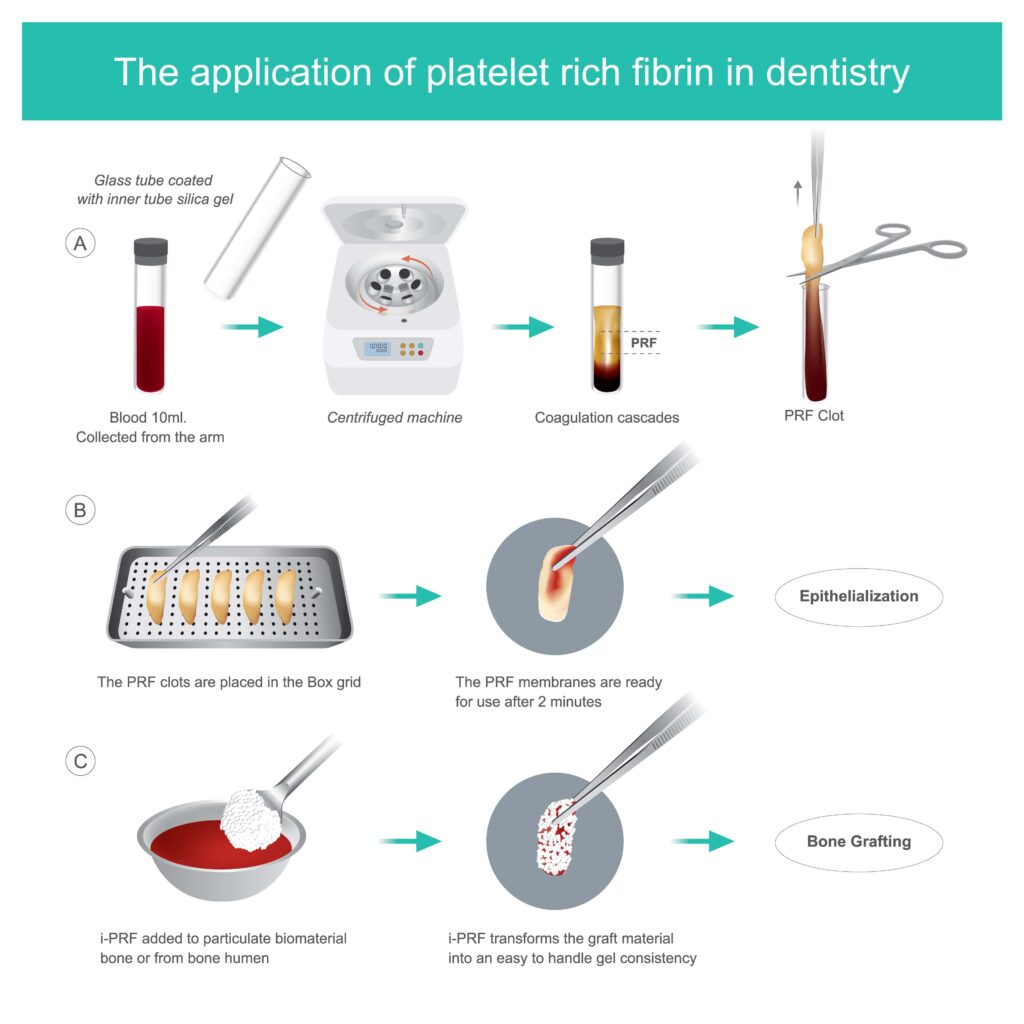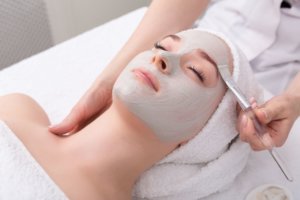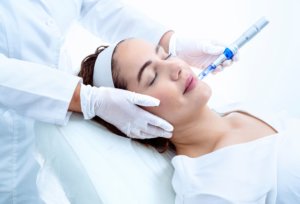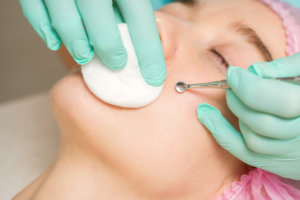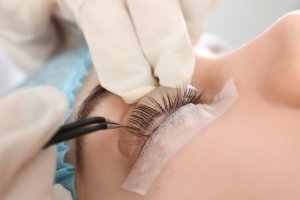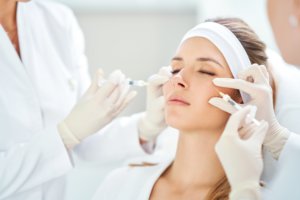Technological advancements have generated various treatment options for the body’s healing and growth, often used for cosmetic purposes. Platelet-Rich Plasma (PRP) and Platelet-Rich Fibrin (PRF) are two common treatments used by medical spas worldwide. Both treatments effectively treat fine lines and wrinkles, improve tone and texture, and fade dark spots and other signs of aging.
How To Prepare PRF and PRP?
PRF and PRP are effective procedures that enable the maximum expected effect since doctors make PRF and PRP from the patient’s blood. They place a blood sample inside a centrifuge to separate the components: platelets, plasma, fibrin, white blood cells, and red blood cells.
Doctors usually run the blood sample through the centrifuge according to the desired serum – PRP or PRF. Afterwhich, they draw the exact concentrated portion of the product needed into a syringe and inject it into the affected or damaged area.
What Are The Similarities Between The Two – PRP and PRF?
- A novel, platelet-based treatment procedure. PRP and PRF have garnered great renown as promising treatment procedures in aesthetic and regenerative medicine.
- Rich in special proteins. Special proteins known as growth factors enable the body to regenerate and heal. PRP and PRP are rich in these growth factors obtained by processing blood. These growth factors are also utilized to potentially regenerate affected areas for cosmetic purposes.
- Autologous platelet concentrates. PRP and PRP are prepared using the patient’s blood and are known as autologous platelet concentrates. That said, this blood is obtained by taking blood samples from the patient before performing the procedure.
- Potentially alternative solutions for aesthetic issues. PRP and PRF are considered to improve overall skin appearance and may help cure conditions such as acne scarring, dark spots, and aged skin by focusing on toning and moisturizing the skin.
What’s The Difference Between PRP And PRF?
While both are forms of regenerative medicine, they have proven their effects in reactivating dormant hair follicles by aiding the production of collagen and stem cells. Although they involve pretty similar procedures and healing factors, there are still stark differences, such as:
Processing Speed
The centrifuge’s spin speed would be lower to harvest platelet-rich fibrin for hair loss treatment. This is because processing the blood sample at a slower speed will still retain stem cells, fibrin, and some white blood cells.
As a result, a serum with higher concentrations of growth factors is produced since it contains platelets, stem cells, and fibrin. Moreover, the speed of centrifugation also kept the individual cells intact.
Platelet Count
PRF has a higher platelet concentration than platelet-rich plasma—centrifugation speed when harvesting PRP leaves many platelets from the extracted serum. However, the platelet count in this serum is still higher by 3 to 5 times than those found in the blood sample. Platelet-rich fibrin retains more platelets because it’s spun at a slower speed.
What They Consist Of ?
Platelet-rich plasma consists of plasma, the liquid portion of the blood that acts as its medium – made of proteins. This plasma is concentrated with platelets, the blood cells responsible for wound and tissue healing.
Unlike PRP, which only contains plasma and platelets, platelet-rich fibrin also contains white blood cells and fibrin. These blood cells also benefit tissue regeneration, making the hair regeneration procedure more effective.
Release Times
Another stark difference between platelet-rich plasma and platelet-rich fibrin for hair regrowth is the release times – PRP releases its concentration of growth factors and platelets much faster than PRF after injection.
This is because processing PRP involves adding anticoagulating factors to prevent blood clotting. In producing PRF, experts allow clotting due to fibrin. The consistency of PRF injections has a matrix or scaffold, which is why the release of growth factors is slower.
What Benefits Do PRP and PRF Provide?
The benefits of PRP include the following:
- A Treatment for Hair Loss
- No Going Under the Knife
- Get Help with Acne Scarring
- Increase Volume In Your Face.
- Say Goodbye to Wrinkles and Fine Lines
- Help Rejuvenate Tired Eyes
- The Effects are Lasting
The benefits of PRF include the following:
- It helps improve the appearance of wrinkles
- It helps improve the appearance of scars
- It helps improve the appearance of dark spots
- It helps improve the appearance of sun damage
- It helps improve the appearance of stretch marks
What Can PRP And PRF Treat?
They contain all the healing essentials, especially growth factors that help treat several issues. When doctors inject the serum into the affected area, the growth factors repair and replace your damaged tissues. That said, the aesthetic problems that PRP and PRF treat include:
- Acne
- Scars
- Dark spots
- Lines and wrinkles
- Sunburns
- Lax and sagging skin
- Stretch marks
- Uneven skin tone
- Hair loss.
Which Is The Best Option?
PRP is most effective for those uneven skin tone, hyperpigmentation, acne scars, or fine lines and wrinkles. There will be an improvement in the skin texture and a reduction in scarring and dark spots, which can be seen within a month. PRP requires 3-4 treatments, four weeks apart, for optimal results, but PRP is not as effective on deep wrinkles or hollows.
On the other hand, PRF will address all the same issues as PRP, but it’s a better option for those who have deeper wrinkles, hollows, or more advanced signs of aging. Most often, PRF is called a natural filler because it’s highly effective at building volume, which results can be expected in approximately 2-3 weeks following the treatment and a more significant difference by 4-6 weeks. Moreover, PRF requires at least two treatments, six months apart, for optimal results, which may differ when combining PRF with other treatments like microneedling.
Because PRP and PRF use the patient’s blood, both treatments are incredibly safe, with a very low chance of adverse reactions. However, those with a blood or bleeding disorder or anti-clotting or blood-thinning medications should not receive the PRP or PRF treatments. Whichever treatment is chosen produces a natural beauty.
Final Thoughts
PRP and PRF are these-generation treatments that show incredible results for revitalizing the face, skin, hair, and other aesthetic conditions. Opulent Aesthetics and Wellness INC offers PRP and PRF, two of the most popular skincare products on the market. PRP is a good option for those who want to regenerate skin cells and promote collagen production, while PRF helps repair damage and improve skin texture.

